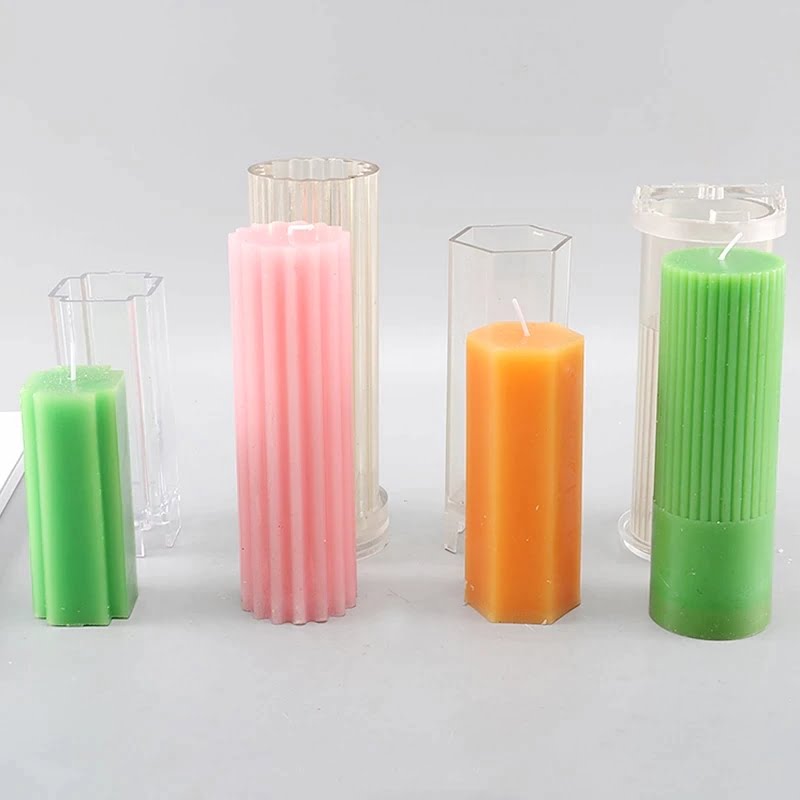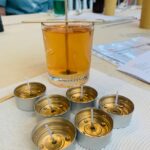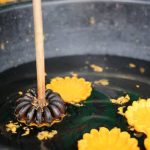Beeswax candles have been gaining significant popularity in recent years, thanks to their unique qualities and benefits. These natural candles offer a warm and comforting glow, a sweet honey-like scent, and numerous environmental advantages. As more people turn to the soothing ambiance provided by beeswax candles, a common question arises: can you use silicone molds when making beeswax candles?
In this article, we will explore the world of beeswax candle making, discussing its growing trend and uncovering the wonders of beeswax as a natural material. We will also delve into the different types of candle molds available in the market, highlighting their advantages and disadvantages. However, our main focus will be on silicone molds – a game changer for beeswax candle making.
Silicone molds have experienced a surge in popularity among candle makers due to their unique qualities and versatility. They provide an ideal medium for creating intricate and detailed designs, while also offering easy release and flexibility during the unmolding process. But can you use silicone molds when making beeswax candles? Join us as we explore the compatibility between these two components and provide tips and best practices for successful beeswax candle making with silicone molds.
Understanding Beeswax
Beeswax is a natural wonder that has been used for centuries in various applications, including candle making. It is derived from the wax glands of honey bees and is known for its unique properties and characteristics that make it ideal for crafting high-quality candles.
One of the key advantages of beeswax is its ability to burn cleanly and emit a bright, warm flame. Unlike paraffin candles, which are made from petroleum byproducts and release toxins when burned, beeswax candles do not produce harmful pollutants or soot. This makes them a healthier choice for both the environment and indoor air quality.
In addition to being eco-friendly, beeswax also offers a range of other benefits. It has a natural sweet scent that adds a pleasant aroma to any space without the need for artificial fragrances. Beeswax candles also burn longer than other types of candles due to their higher melting point and slower burn rate. This means you can enjoy their warm glow for extended periods of time before needing to replace them.
Another advantage of using beeswax is that it has a beautiful, natural color and texture. It can range from pale yellow to golden brown, adding an elegant touch to your candle creations. Beeswax also has a natural tackiness that allows it to adhere well to itself and other materials, making it easier to work with when making candles.
Overall, understanding the unique properties and benefits of beeswax helps explain why it is highly favored by candle makers around the world. Its clean burn, natural fragrance, long-lasting performance, and aesthetic appeal make it an excellent choice for those who appreciate high-quality candles.
Exploring Different Candle Making Molds
An Overview of Various Types of Candle Molds
When it comes to candle making, the choice of molds plays a crucial role in determining the final outcome and aesthetic appeal of the candles. There are various types of candle molds available in the market, each with its own set of advantages and disadvantages.
One popular type of mold is the metal mold, which is typically made from aluminum or tin. Metal molds are known for their durability and ability to withstand high temperatures, making them suitable for both beeswax and other types of wax. These molds come in a wide range of shapes and sizes, allowing candle makers to create intricate designs and patterns.
Another commonly used mold is the plastic mold. Plastic molds are affordable and lightweight, making them easy to work with. They also come in a variety of shapes and designs, enabling candle makers to unleash their creativity. However, it’s important to note that not all plastic molds are suitable for beeswax candles as some may not be able to withstand the higher melting point of beeswax.
Advantages and Disadvantages
Each type of candle mold has its own set of advantages and disadvantages. Metal molds provide excellent heat conductivity, resulting in faster cooling times and smoother finishes on the candles. They are also more durable compared to other types of molds. However, metal molds can be more challenging to release candles from as they do not have the flexibility that certain other materials offer.
On the other hand, plastic molds are highly flexible, allowing for easy removal of candles once they have hardened. They are also less expensive than metal molds, making them a cost-effective option for beginner candle makers. However, plastic molds may not withstand high temperatures, limiting their use with beeswax or causing them to warp over time.
Overall, choosing the right candle mold depends on personal preference and desired outcomes. Some candle makers prefer experimenting with different materials to achieve various textures and finishes, while others opt for molds that are specifically designed for their chosen wax type.
When it comes to candle making, the choice of molds is an important decision. The right mold can contribute to the success of your candles and enhance the overall candle-making experience. By exploring the different types of molds available in the market, you can find the perfect mold that suits your needs and helps you create stunning beeswax candles.
Whether you prefer metal or plastic molds, there are options available for every level of expertise. So go ahead and embrace your creativity by selecting the perfect mold for your next beeswax candle-making project.
Silicone Molds
Silicone molds have revolutionized the art of beeswax candle making. These molds are made from a flexible and durable material that allows for easy release of candles, making them an excellent choice for those looking to create beautiful and intricate beeswax candles. In this section, we will explore what silicone molds are and their growing popularity in the candle making community, as well as highlight the benefits of using silicone molds specifically for beeswax candle making.
Silicone molds are typically made from a food-grade silicone material that is heat-resistant and non-stick. They come in various shapes, sizes, and designs, allowing for endless creativity when it comes to candle making. Unlike traditional metal or plastic molds, silicone molds offer flexibility, which makes removing the finished candles effortless. The softness and pliability of silicone molds ensure that even the most delicate details of your beeswax candles remain intact.
One major benefit of using silicone molds is their ability to withstand high temperatures without warping or melting. Beeswax requires a higher pouring temperature compared to other candle waxes, so it’s crucial to use a mold that can withstand these temperatures.
Silicone molds are perfect for this purpose because they can handle temperatures up to 500 degrees Fahrenheit (260 degrees Celsius) without any adverse effects. This means you can melt your beeswax directly in a heat-resistant container and pour it into the silicone mold without worrying about damaging the mold or altering its shape.
Additionally, silicone molds offer durability and longevity. Unlike some other types of molds that may crack or break over time, silicone molds can be used repeatedly without any significant wear and tear. They are also easy to clean – simply wash them with warm soapy water after each use, dry thoroughly, and they’re ready for your next candle-making session.
Can You Use Silicone Molds When Making Beeswax Candles?
Silicone Molds and Beeswax Compatibility: Making Beeswax Candles with Silicone Molds
Addressing the Main Question
When it comes to making beeswax candles, one common question that arises is whether silicone molds can be used. The good news is that yes, you can definitely use silicone molds when making beeswax candles. Silicone molds are versatile and can be a game changer in candle making, offering several advantages over other types of molds. However, there are a few considerations to keep in mind to ensure successful results.
Compatibility of Beeswax and Silicone Molds
Beeswax, known for its pliability and flexibility, makes it an excellent material for candle making. Similarly, silicone molds possess these same qualities. Both materials work together harmoniously, allowing for easy release of the finished candles without the need for greasing or lining the molds. The flexibility of silicone also makes it easier to remove the finished candles without any damage.
Tips and Best Practices
To use silicone molds effectively for beeswax candle making, there are a few tips and best practices to consider:
- Choose high-quality silicone molds: Look for molds made from food-grade silicone that is heat-resistant and free from any chemical additives.
- Preparing the mold: Prior to pouring melted beeswax into the mold, it’s important to make sure it is clean and dry. Inspect the mold for any defects or cracks that may affect candle release or shape.
- Temperature control: Be mindful of the temperature when pouring melted beeswax into silicone molds. Extreme temperature differences may cause warping or cracking of the mold.
- Release method: Once your candles have set and cooled completely, gently flex the sides of the mold to release the candles. For stubborn areas that may stick slightly, you can use a freezer for a few minutes to help loosen the wax.
Using silicone molds with beeswax candles opens up a world of creative possibilities. The flexibility, ease of release, and intricate designs achievable with silicone molds make them an excellent choice for candle making enthusiasts.
By following these tips and best practices, you can confidently experiment with various mold shapes and sizes to create beautiful beeswax candles using silicone molds. So go ahead, unleash your creativity, and enjoy the wonderful journey of making unique beeswax candles with the help of versatile silicone molds.
Step-by-Step Guide
Making beeswax candles with silicone molds is a simple and enjoyable process that allows you to create beautiful and unique candles. Follow this step-by-step guide to learn how to make beeswax candles using silicone molds:
Prepare the molds
- Start by cleaning your silicone molds thoroughly to ensure there are no dust or residue particles that could affect the quality of your candles.
- If your silicone mold has multiple cavities, consider placing them on a tray or baking sheet for stability during the pouring process.
- Optionally, you can apply a small amount of mold release spray or vegetable oil to facilitate the easy release of the finished candles.
Melt the beeswax
- Using a double boiler or a dedicated wax melting pot, melt your beeswax over low heat. Beeswax has a relatively low melting point, so be careful not to overheat it.
- Stir gently and consistently until all the beeswax has melted into a smooth liquid. Avoid introducing any water or moisture into the wax, as it can cause issues with its texture and quality.
- Add any desired fragrance oils or essential oils at this stage if you wish to scent your candles.
Pouring the beeswax into the molds
- Carefully pour the melted beeswax into each cavity of your silicone mold, filling them up to about 90% full. Leaving some space at the top will allow for shrinkage during cooling and prevent any overflow.
- To minimize air bubbles in your candles, pour slowly and steadily while holding the pouring container close to the mold’s surface.
- Once filled, gently tap or agitate the mold to release any trapped air bubbles.
Releasing the candles
- Allow the beeswax candles to cool completely at room temperature. This process usually takes several hours, so be patient.
- Once cooled and solidified, carefully flex or peel back the sides of the silicone mold to release the candles. The flexibility of silicone molds makes this step relatively easy compared to other traditional mold materials.
- If you encounter any difficulty releasing a candle, try placing the mold in the refrigerator for a short period to firm up the beeswax before attempting again.
Remember to always follow proper safety precautions when working with hot wax and open flames. Enjoy your newly created beeswax candles and embrace your creativity by experimenting with different colors, scents, and designs using silicone molds.
Troubleshooting and Tips for Successful Silicone Mold Candle Making
Using silicone molds for beeswax candle making can provide many advantages, such as easy release and flexibility. However, like any craft, there may be some challenges that arise when working with silicone molds. In this section, we will address common issues faced when using silicone molds for beeswax candles and provide helpful tips to ensure successful results.
One common problem that people encounter is air bubbles in their finished candles. To prevent air bubbles from forming, it is essential to properly prepare the silicone molds before pouring the melted beeswax. Start by cleaning the mold thoroughly to remove any dust or debris that could cause irregularities in the finished candle surface. Additionally, consider using a mold release spray or rubbing a thin layer of cooking oil on the inside of the mold to help prevent sticking.
Another issue that can occur is difficulty in releasing the candles from the mold. While silicone molds are known for their easy-release properties, occasionally, a candle may become stuck. To avoid this, allow sufficient cooling time before attempting to remove the candle from the mold.
Gently flexing or twisting the sides of the mold can help release any suction between the wax and silicone. If necessary, place the mold in a freezer for a short period of time to firm up the wax for easier removal.
Temperature control is crucial when using silicone molds for beeswax candles. Beeswax has a relatively low melting point compared to other waxes, which means it can be more sensitive to heat fluctuations. It is important to monitor and maintain a consistent temperature throughout the candle-making process. Rapid temperature changes can cause problems such as uneven cooling or cracking in your finished candles.
Alternative Candle Making Methods for Beeswax Lovers
Beeswax candles have gained popularity in recent years due to their many benefits, including their natural properties and health benefits. While silicone molds are a game changer in the world of candle making, there may be some beeswax lovers who prefer alternative methods and molds for creating their candles. In this section, we will explore different candle making methods that can be used with beeswax.
One alternative method for making beeswax candles is using metal or aluminum molds. These molds are durable and long-lasting, making them a popular choice among candle makers. Metal or aluminum molds come in various shapes and sizes, allowing for endless creativity and customization. They also conduct heat well, which ensures even burning of the beeswax candles. However, it is important to note that these molds require careful maintenance and cleaning to prevent rusting.
Another option for beeswax lovers is the use of glass containers or jars as candle molds. This method is particularly popular for making container candles, where the melted beeswax is poured directly into a glass container or jar.
Glass containers offer a transparent view of the beautiful beeswax as it burns, adding an elegant touch to any space. Additionally, using glass containers allows for easy customization by adding decorative elements such as dried flowers or herbs to create unique designs within the candle.
| Candle Making Method | Advantages | Disadvantages |
|---|---|---|
| Metal/Aluminum Molds | – Durable and long-lasting
| – Require careful maintenance and cleaning
|
| Glass Containers/Jars | – Offers transparent view of burning beeswax
| – Limited shape options compared to other molds
|
It is important to experiment with different candle making methods and molds to find the one that best suits your preferences and needs. Each method has its advantages and disadvantages, so consider factors such as desired candle shape, ease of use, and overall aesthetic when making your choice. Remember, the goal is to embrace creativity and enjoy the process of making beautiful beeswax candles.
Conclusion
In conclusion, the use of silicone molds in making beeswax candles is indeed possible and highly beneficial. Beeswax candles have gained a significant following due to their natural properties and health benefits. They are not only eco-friendly but also offer a clean burning experience with a pleasant aroma. The versatility of beeswax allows for endless possibilities in candle making, and silicone molds have emerged as a game changer in this craft.
Silicone molds have become increasingly popular among candle makers due to their flexibility and easy release properties. Unlike traditional molds, silicone molds require no greasing or prepping, allowing for effortless removal of the finished beeswax candles. The flexibility of these molds also enables intricate designs and elaborate shapes that were once difficult to achieve. With the use of silicone molds, both beginners and experienced candle makers can explore their creativity to the fullest.
We encourage all beeswax candle enthusiasts to embrace the use of silicone molds and discover the countless possibilities they offer. Whether you prefer simple pillar candles or intricate figurine designs, silicone molds provide a reliable and convenient tool for creating unique beeswax candles. Experiment with different shapes, sizes, and textures to bring your imagination to life.
Frequently Asked Questions
Can you make beeswax candles in silicone molds?
Yes, it is possible to make beeswax candles in silicone molds. Silicone molds are a popular choice for candle making because they are flexible and non-stick, making it easier to remove the finished candle.
They also have excellent heat resistance, which is important when working with melted wax. Beeswax, being a natural wax derived from bees, can be safely poured into silicone molds without any adverse effects on the mold or the final candle.
Can you use silicone molds for candle wax?
Silicone molds can indeed be used for candle wax. Silicone has become a preferred material for candle making molds due to its versatility and durability.
Candle wax can be safely poured into silicone molds as long as the temperature of the melted wax does not exceed the heat resistance of the specific silicone mold being used. It is essential to choose high-quality silicone molds that are specifically designed for candle making to ensure successful results.
What is the best mold for beeswax candles?
The best mold for beeswax candles often depends on personal preference and the desired shape or design of the finished candles. However, many experienced candle makers recommend using metal molds for beeswax candles. Metal molds offer better heat conductivity than other types of materials, allowing the melted beeswax to cool and solidify more quickly and evenly.
Additionally, metal molds tend to have smooth surfaces, which make it easier to release the finished candles without any imperfections or sticking issues. However, it’s worth noting that there are also high-quality silicone and glass molds available that work well with beeswax if one prefers those materials over metal. Ultimately, consider factors such as ease of use, specialty shapes available, and personal preferences when selecting a mold type for your beeswax candles

Welcome to my candle making blog! In this blog, I will be sharing my tips and tricks for making candles. I will also be sharing some of my favorite recipes.





